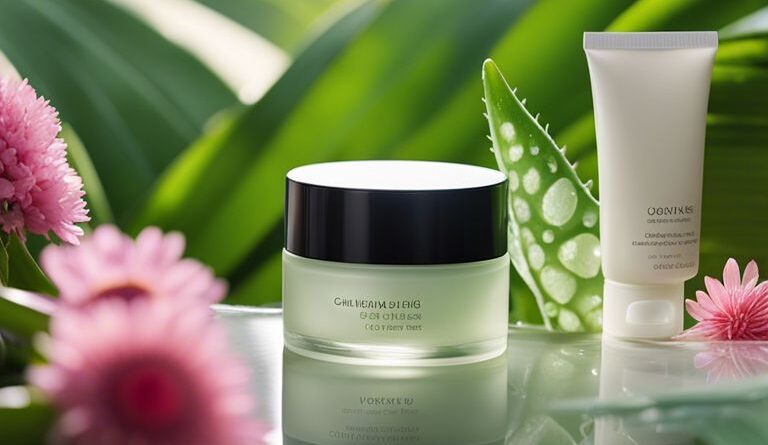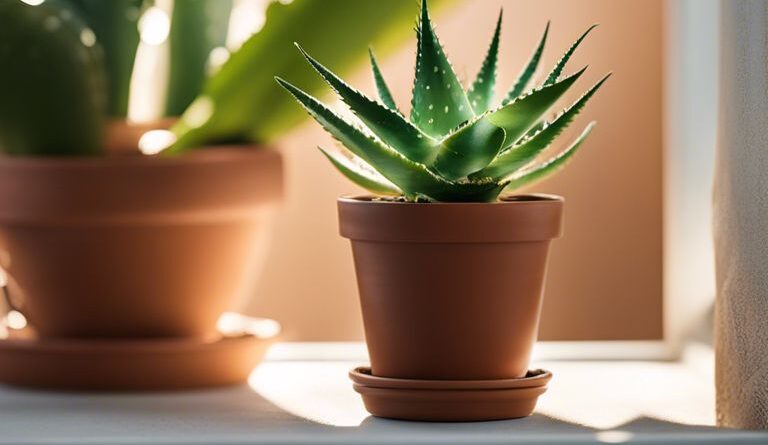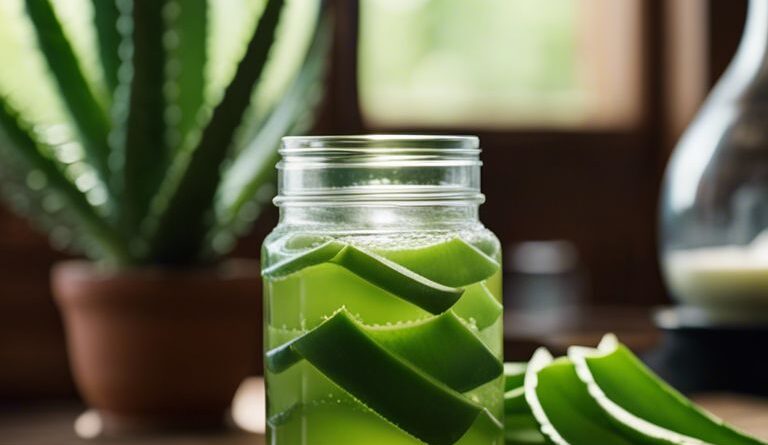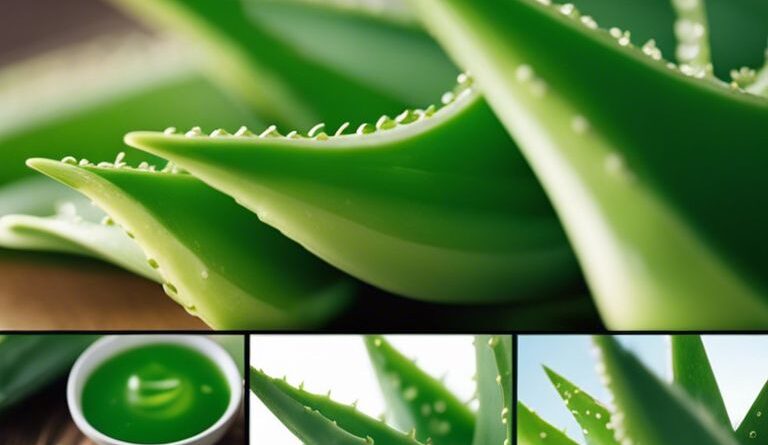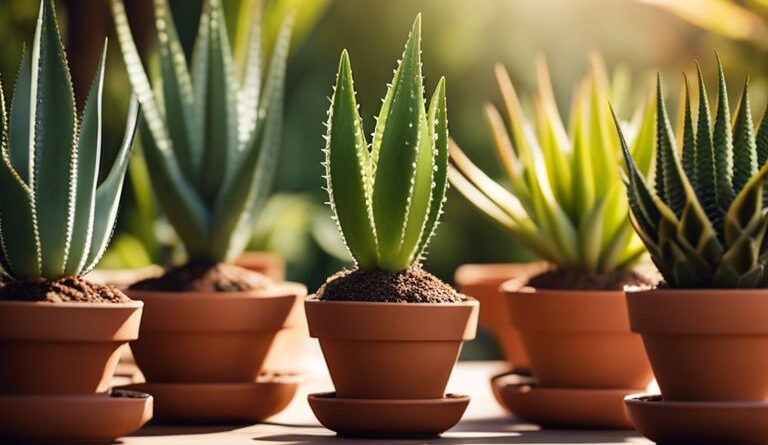

"Organic Aloe Vera Gel from freshly cut 100% Pure Aloe - Big 12oz - HighestQuality, Texas grown, Vegan, Unscented - For Face, Skin, Hair, Sunburn relief"
Global Healing Aloe Vera Bio-Active Organic Leaf Supplement - 200x Concentrate Formula with Highest Concentration of Acemannan - Aloin-Free - Gut Health & Immune Support - 60 Capsules
There’s nothing quite like the satisfaction of using freshly harvested aloe vera leaves for your skin and health needs. Not only is aloe vera a powerful plant with a myriad of benefits such as soothing burns and promoting skin healing, but knowing how to properly harvest its leaves ensures you get the most out of its healing properties. In this beginner’s guide, we will take you through the step-by-step process of harvesting aloe vera leaves, highlighting key tips to avoid damaging the plant and maximize its benefits. Let’s get started on this journey to harness the power of aloe vera straight from your own garden!
Key Takeaways:
- Harvest mature leaves: It is important to wait until the aloe vera plant is mature before harvesting the leaves to ensure maximum benefits and potency.
- Cut leaves at an angle: When cutting aloe vera leaves, make sure to do so at an angle to prevent the sap from leaking and to facilitate healing of the plant.
- Store harvested leaves properly: After harvesting the aloe leaves, store them in a cool, dry place to maintain their effectiveness and prolong their shelf life.
Identifying Aloe Vera Leaves Ready for Harvest
The key to successfully harvesting aloe vera lies in identifying the leaves that are ready for harvest. Here, we will discuss the factors that determine leaf maturity and provide tips for recognizing when aloe vera leaves are harvest-ready.
Factors Determining Leaf Maturity
The size and age of the leaves are crucial factors in determining their readiness for harvest. Mature leaves are usually thicker and wider than younger leaves. Additionally, the color of the leaves can indicate their maturity, with mature leaves being a darker green compared to younger leaves. Finally, the texture of the leaves can also help determine maturity, as mature leaves are firmer and less pliable.
- Size and age of the leaves
- Color of the leaves
- Texture of the leaves
Recognizing these factors can help you determine the optimal time to harvest aloe vera leaves for maximum potency.
Tips for Recognizing Harvest-Ready Leaves
Now, let’s probe into some practical tips for recognizing when aloe vera leaves are ready for harvest. Pay attention to the firmness of the leaves as well as their color and size to determine maturity. Harvest leaves that are at least 8 inches long and feel firm to the touch for the best results.
- Firmness of the leaves
- Color and size of the leaves
Assume that leaves showing signs of discoloration or softness are past their prime and may not contain the same beneficial properties as fully mature leaves.
Another crucial tip is to avoid harvesting leaves from aloe vera plants that are under three years old. Mature leaves from established plants are more potent and contain higher concentrations of beneficial compounds. Wait until the plant has developed a cluster of healthy leaves before considering harvest.
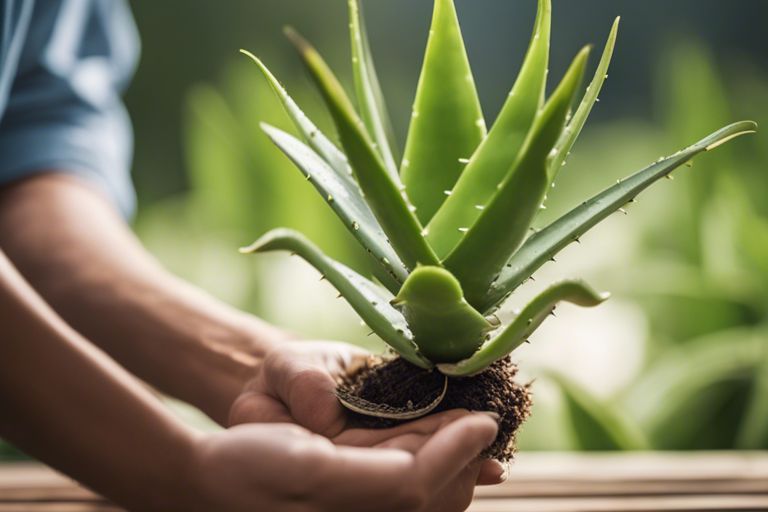
Preparing to Harvest Aloe Vera Leaves
Essential Tools for Harvesting
Now, before you begin harvesting aloe vera leaves, it’s imperative to gather the right tools. You will need a sharp knife or garden shears, rubbing alcohol or bleach for sterilization, and gloves to protect your hands from the plant’s sharp edges.
Sanitation and Best Practices
With proper sanitation and best practices, you can ensure a successful and safe aloe vera leaf harvesting process. There’s no room for compromise when it comes to cleanliness to prevent any contamination. Make sure to sterilize your tools before and after each use to avoid introducing any pathogens to the plant.
For instance, using dirty tools can introduce harmful bacteria to the plant, leading to infections. It’s crucial to maintain a clean work environment and practice good hygiene throughout the harvesting process. Do not forget, aloe vera is known for its healing properties, so keeping it free from any contaminants is key to maximizing its benefits.
How-To: The Harvesting Process
Step-by-Step Guide to Cutting Aloe Vera Leaves
| Step | Description |
| Clean your tools | Ensure your cutting tools are disinfected to avoid contamination. |
| Select a mature leaf | Choose a leaf from the outer rows, as they contain the most potent gel. |
| Cut the leaf | Use a sharp, clean knife to cut the leaf at the base near the plant. |
How to Minimize Damage to the Plant
To minimize damage to the aloe vera plant during harvesting, it is important to cut the leaves at an angle and close to the stem. Avoid tearing the leaves as it can lead to infections and slow down the plant’s healing process.
Vera Overharvesting can weaken the plant, so it’s crucial to harvest responsibly and allow the plant to recover between harvests. By following proper techniques, you can ensure a healthy and sustainable aloe vera plant in your garden.
Post-Harvest Care and Uses
Despite How to Harvest Aloe Vera Leaves, aloe vera plants require proper post-harvest care to ensure longevity and optimal usage. Here are some crucial steps to follow after harvesting your aloe vera leaves:
Storing Fresh Aloe Vera Leaves
Post-harvest, it is crucial to store fresh aloe vera leaves properly to maintain their effectiveness. To store them, wrap the leaves in a damp paper towel and place them in an airtight container in the refrigerator. This will keep them fresh for up to two weeks, ensuring you have a readily available supply for your skin care needs.
Tips for Utilizing Harvested Aloe Vera
On top of using aloe vera leaves for soothing sunburns and skin irritations, there are various other ways to utilize the harvested leaves. You can blend the gel with coconut oil and lavender crucial oil to create a moisturizing lotion, or add it to your smoothies for its health benefits. Aloe vera gel can also be used for hair masks and bug bite relief, making it a versatile plant to have on hand. Recognizing the versatility of aloe vera can enhance its value in your daily routine.
Despite its healing properties, aloe vera should not be ingested in large quantities as it can have laxative effects. It is always recommended to do a patch test before applying aloe vera topically to avoid any allergic reactions. Remember to consult with a healthcare professional before using aloe vera for medicinal purposes.
To wrap up
With this in mind, harvesting aloe vera leaves is a simple process that can bring numerous benefits to your health and beauty routine. By following the guidelines outlined in this beginner’s guide, you can safely and effectively extract the gel from aloe vera leaves for various uses. Remember to prioritize safety by using clean tools and practicing proper techniques to avoid skin irritation. Whether you are looking to soothe a sunburn, hydrate your skin, or promote hair growth, aloe vera gel is a versatile natural remedy worth incorporating into your daily regimen. Start harvesting your aloe vera leaves today and enjoy the many advantages this miraculous plant has to offer.
FAQ
Q: Why is it important to harvest aloe vera leaves properly?
A: Harvesting aloe vera leaves properly ensures that you are able to extract the maximum benefits from this succulent plant without causing harm to the plant itself.
Q: When is the best time to harvest aloe vera leaves?
A: The best time to harvest aloe vera leaves is in the morning when the concentration of beneficial compounds is at its highest.
Q: What tools do I need to harvest aloe vera leaves?
A: To harvest aloe vera leaves, you will need a sharp knife, cutting board, clean cloth, and a container to store the harvested leaves.
Q: How do I harvest aloe vera leaves without damaging the plant?
A: To harvest aloe vera leaves without damaging the plant, make sure to cut the leaves at an angle near the base using a sharp knife and avoid tearing or bruising the leaves.
Q: What is the best way to store harvested aloe vera leaves?
A: The best way to store harvested aloe vera leaves is by wrapping them in a clean cloth and placing them in an airtight container in the refrigerator to maintain freshness and maximize shelf life.


